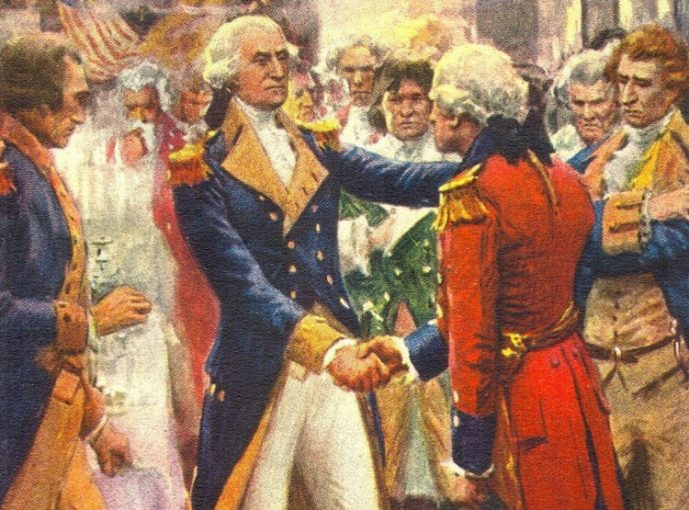In the 1790s, if you asked an American what was an “obvious truth,” they would likely say: George Washington. His authority was so unquestionable that Americans of the time saw him as the undisputed leader—almost like a god on Mount Olympus. But on a seemingly ordinary day, September 19, 1796, something unimaginable happened. The American Daily News in Philadelphia published an article titled “To the People of the United States,” beginning with: “Friends, Fellow Citizens: The time for a new election for the chief executive of the American government is approaching… I have decided not to seek re-election.” Signed simply “G. Washington,” no titles, no fanfare.

This announcement shocked the nation. It was swiftly reprinted by major newspapers and became a pamphlet. The New Hampshire Gazette coined it “Washington’s Farewell Address,” though, in truth, Washington never delivered it as a speech. It was a written letter, but it became one of the most enduring documents in American history. This “Farewell Address” set a precedent that would last over a century: a president should not serve more than two terms. Franklin D. Roosevelt would break this tradition in 1940, but it was firmly established in law with the 22nd Amendment in 1951.
Washington’s decision to voluntarily step down from power was unprecedented. In a world where kings and monarchs held unchallenged rule, Washington chose to return power to the people. His decision reinforced the idea that the presidency was not a lifetime position, and no individual was above the law. Washington’s integrity not only set a crucial precedent but also signified a symbolic rejection of hereditary monarchy, affirming the strength of republican governance.
However, the “Farewell Address” wasn’t just about the two-term limit. For over two centuries, it has been studied and interpreted as a profound statement of Washington’s vision for America. Alongside the Declaration of Independence and Lincoln’s Gettysburg Address, it forms part of the trio of most important American political documents. Every year, on Washington’s birthday (February 22), a member of Congress reads his “Farewell Address” aloud as a reminder of his wisdom.
The Call for Unity and Isolation
Washington’s reasons for stepping down were both personal and political. By 1796, at the age of 65, his health was deteriorating, having suffered multiple illnesses, some life-threatening. He feared that if he continued as president, he would die in office, an uncomfortable parallel to monarchies that had rulers until death. Washington longed to return to his estate, Mount Vernon, where he could find peace among the “grapevines and fig trees.”
But it wasn’t just health concerns that motivated him. Washington had suffered heavy criticism, especially after events like the Whiskey Rebellion and the Jay Treaty. The former made him appear overly harsh, and the latter was seen as a betrayal of France, alienating some of his supporters. He had also been accused of growing old and feeble, no longer the strong commander of his earlier days, and there were rumors that he intended to crown himself king. Washington, always a man of honor, could not abide such accusations.
At the time, many thought no one could replace Washington, but he disagreed. In his letter to his trusted friend, Alexander Hamilton, Washington expressed his belief that no one was truly irreplaceable, not even himself. Despite widespread admiration, he understood the importance of maintaining a government that did not depend on a single individual.
The “Farewell Address” was not only a departure but a call to action for the young nation. Washington outlined his vision for America’s future, focusing on two key themes: internal unity and external isolation. He warned against the divisive forces of party politics and sectionalism, urging Americans to prioritize the welfare of the nation over regional interests. He famously stated, “The name of American, which belongs to you, in your national capacity, must always exalt the just pride of patriotism.”
A Vision for the Future
Washington was also deeply concerned with the future of the nation, particularly the vast lands to the west. Although he had no knowledge of geography or the precise boundaries of the American continent, Washington urged Americans to look westward. He saw the vast expanse of North America as a gift from God, one that should not be abandoned or hindered by foreign powers. This forward-thinking vision would eventually lead to the westward expansion of the United States, despite the challenges that lay ahead.
One point of disagreement between Washington and Hamilton was the establishment of a national university to foster unity. Washington believed that education would help unite the disparate states, but Hamilton was less convinced. In the end, a small mention of the idea was included in the address, though it was never fully realized. The federal government never created a national university, although several military academies were founded.
Washington’s most significant piece of advice, however, was his foreign policy stance, which emphasized isolationism. He warned against getting entangled in Europe’s political struggles, advising that the United States should focus on commerce rather than military alliances. “Our true policy is to steer clear of permanent alliances with any portion of the foreign world,” he wrote, a sentiment that would influence U.S. foreign policy for many years.
Conclusion: A Legacy for the Ages
Washington’s “Farewell Address” remains one of the most important documents in American history. Its impact can still be felt today, especially in the way it shaped the American presidency and foreign policy. Washington’s wisdom on unity, isolation, and the dangers of political factionalism continues to resonate with modern Americans, reminding us that the strength of the nation lies in its commitment to democratic principles and the rule of law.

No comments yet.